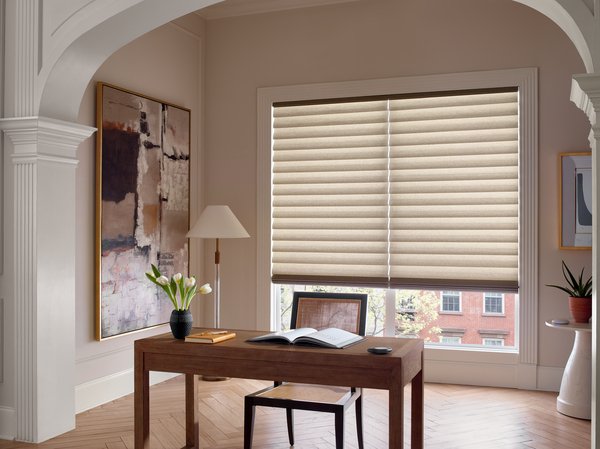What in the world are window coverings
Have you ever been browsing an interior design magazine or internet images when you came across windows with covers that would look ideal in your house, but weren't sure exactly what kind of window treatments you were looking at? Or what other items would be required to produce the alluring overall effect?
Not to worry, at Sonata Design, our talented team can help you to figure out what will look good and work well in your home. In order to help you understand what our experts are talking about, we wanted to give you a brief overview of some common window treatment terminology:
What types of treatment options are there?
The two primary groups of window coverings are as follows. Soft window treatments, such as drapes, curtains, swags, sheers, and valances, are constructed of fabric or textiles. Hard window treatments are typically made of aluminum, vinyl, or wood. We will explore these options in more detail later in this blog. They consist of cornice boards, blinds, and shutters. Depending on the substance they are made of and the aesthetic they produce, certain hues might be categorized as hard or soft.
Soft Hard
What are the differences between drapes and curtains?
Although the phrases “drapes” and “curtains” are sometimes used interchangeably, there are some actual distinctions between the two that are simple to grasp once you are aware of them. The fabric panels used in both window coverings are normally hung in pairs. But draperies are typically made from heaver materials than curtains, and they might even be lined for added thickness. The drapes are long enough to go all the way to the floor from just above the window. In fact, they occasionally have a couple additional inches to produce a plush “pooling” look.
Contrarily, curtains can be either short or long and are often constructed from a lightweight, unlined fabric.
Blinds vs. Shades
Blinds are rigid window coverings with louvres (slats) that may be opened, closed, and angled for privacy and light control. Shades can be folded up or down and are typically solid cloth window coverings.
Now that you're fluent in the terminology, Our next section will go over some types of product in each category.
Soft window treatments
Sheer shades are see through and offer UV Protection depending on how much you tilt the vanes in the shade.
Banded shades are light and airy and gives you more control over how much light is coming into your space. These shades offer 95% UV Protection in a closed position and 85% UV protection in an open position
Pleated style blinds are easier to maintain because dust and bugs can’t get into the material, and these blinds are generally less troublesome with pets and kids.
Roman shades can be made of either a fabric material or wood and can come in a variety of different liners:
Unlined
Blackout for room darkening
Light filtering for privacy
Hard window treatments
Honeycomb blinds offer a cellular structure that acts as an insulator between the glass and the home, which gives you energy and sound absorption in your space.
Faux wood or real wood blinds allow you to control the light that enters a room by tilting the vanes of the blind, these are a more traditional form of blinds.
Shutters are easily cleaned and durable window treatments that enable you to play with the aesthetics by where you are placing the tilt bar, the size of the louvre and the style of frame around the shutters









